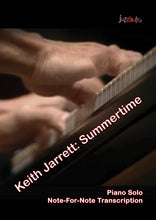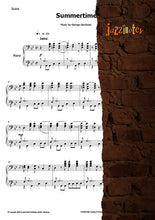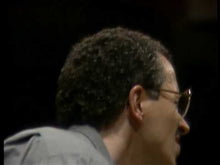Short Description: The sheet music is a note-for-note transcription of the YouTube video "Summertime" (Keith Jarrett)
Licensed Territory: worldwide
Instrumentation: Piano solo
Interpreter: Keith Jarrett
Music by: George Gershwin
Level: 4 (of 5)
Pages: 10
Order No. 101-380-8053d
Guarantee: yes
Video: Please click on the video icon above!
Songfacts:
There are several transcriptions of Keith Jarrett's interpretation of summertime. But they do not contain the essence of this interpretation: the layers in the right and left hand. And you find there a lot of mistakes. That's why jazzinotes dicided to do its own transcription with a high claim: note-for-note!
From the time of its composition in 1935 until today, Summertime has been the most frequently covered jazz and pop standard. Why? It lives through the contrast between the carefree text (a lullaby describing the light, easy world of summer) and the more melancholic, dreamy melody. This song originally stems from the musical Porgy and Bess, in which it is sung four times, each time shortly before the death of a character. It is interesting to note the simplicity of the melody, which is pentatonic for long stretches – very suitable for a lullaby. In many ways the song expresses a longing for a better, safer world. Up to 2012, there have been 32 385 cover versions of this song documented. The first to be greeted with success in the hit parade was from Billie Holliday in 1936. Nearly all of the jazz greats have covered Summertime: Louis Armstrong, Ella Fitzgerald, Sidney Bechet, John Coltrane, Miles Davis, Oscar Peterson, etc. Also the Beatles, Same Cooke, Billy Stewart (scat version!), Booker T., Janis Joplin, Tori Amos and Gene Harris have put their spin on it. Conclusion: Summertime is the most covered song of all times.
A short word about the composer: George Gershwin (1898 – 1937) lived between the worlds of the popular song, the symphony orchestra and jazz combos / big bands. He worked as a pianist for a publisher, where his job was to make songs from band leaders and theater agents more palatable. Through this connection he first began to compose for Broadway. At first a partner orchestrated his works for him, but later he did his own orchestration and wrote directly for orchestra. Especially in Porgy and Bess, he dealt intensively with the African-American musical world. He even had specified in his contract that this work should be exclusively performed by black singers.
Transposition:
We can transpose this score for you. This is how it works:
1. Order it in the original version.
2. Order our article Transposition A.
3. Send an informal email to info@jazzinotes.com (subject: “Transposition”). In the text of the email please indicate the title of the original as well as the key desired.
You’ll receive the transposition within a couple of days as a
pdf file you can open using your password for the original version.







